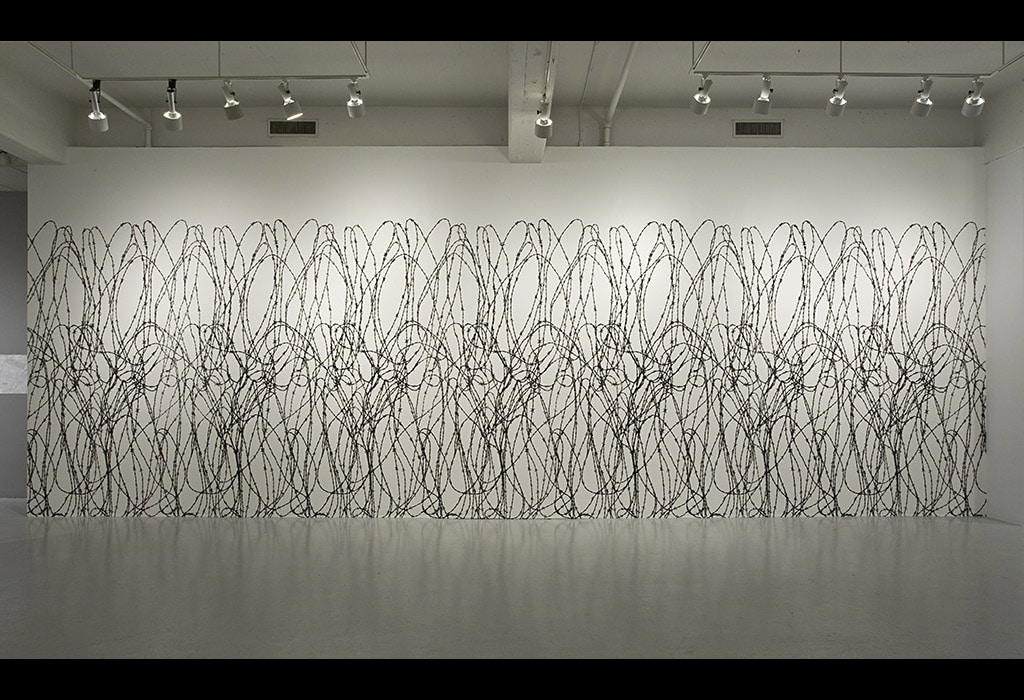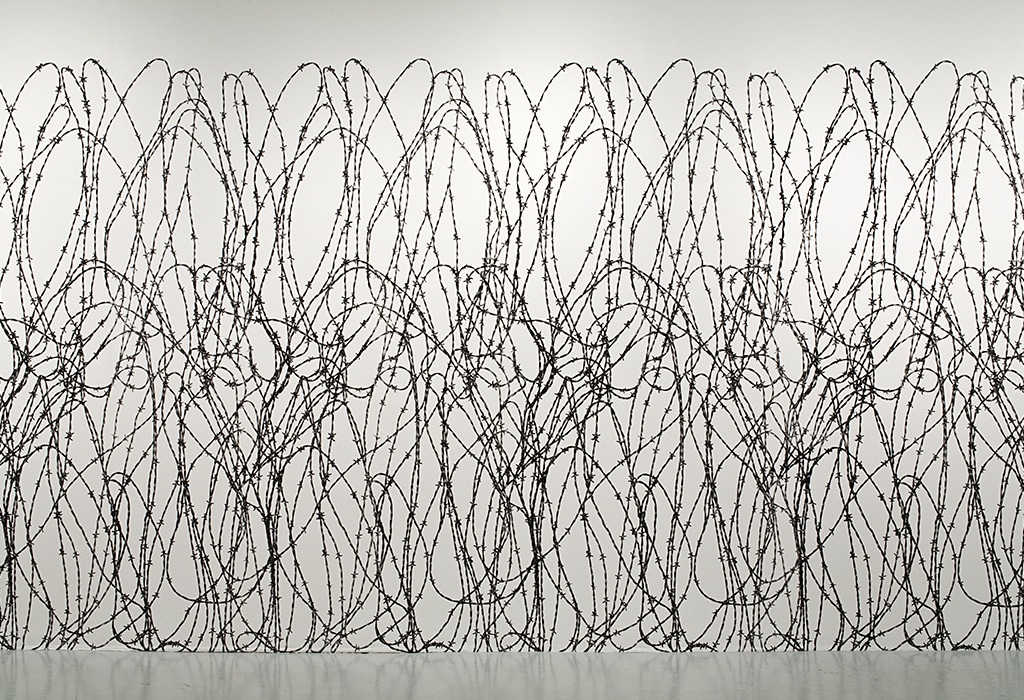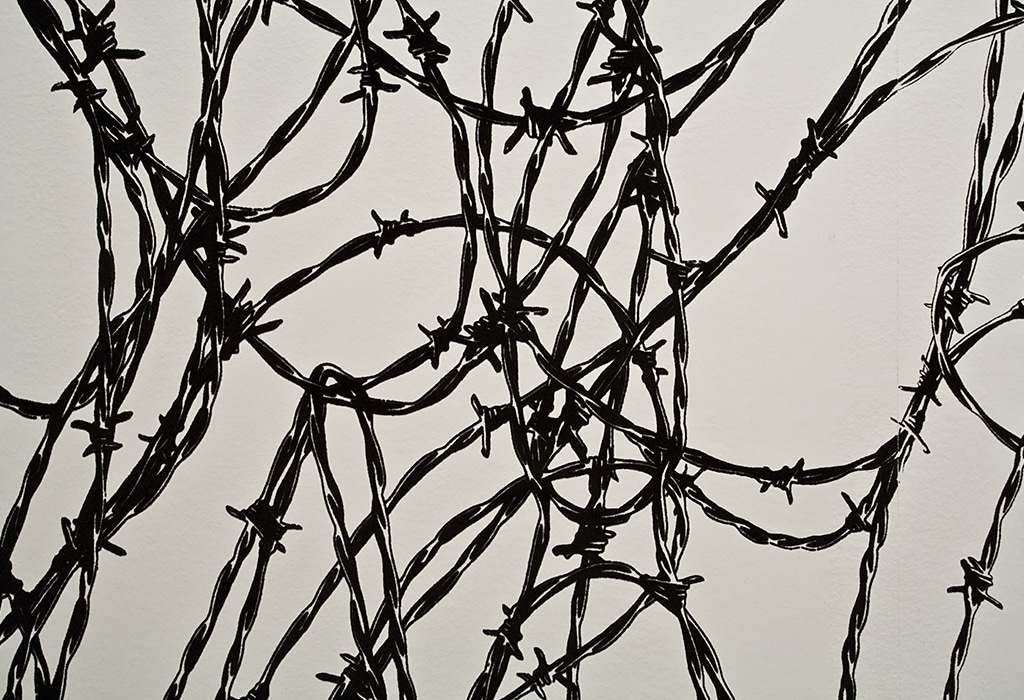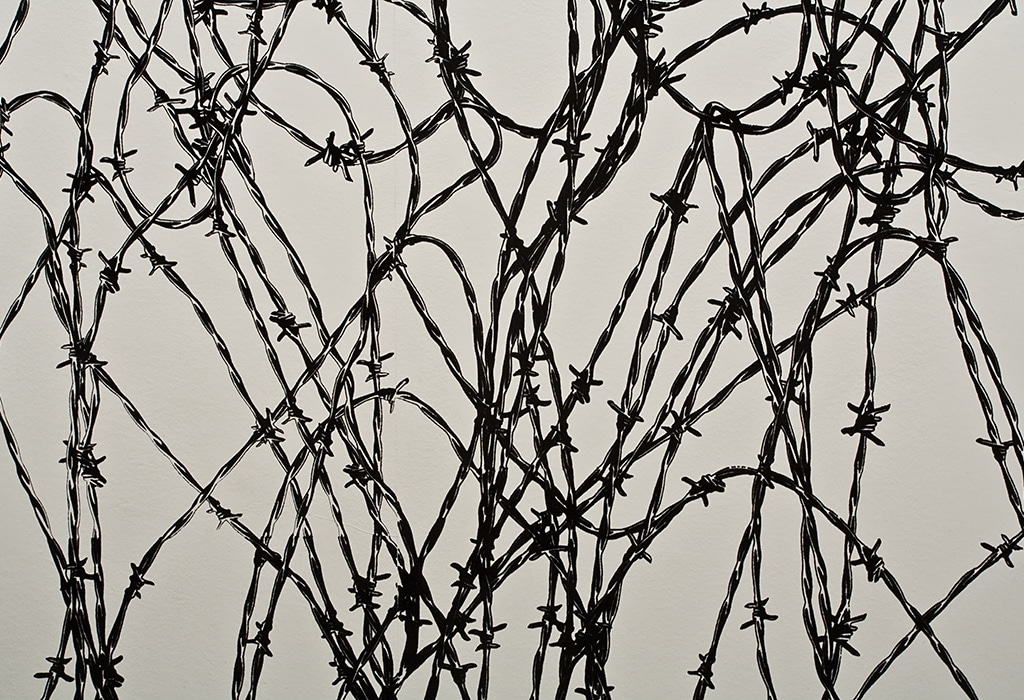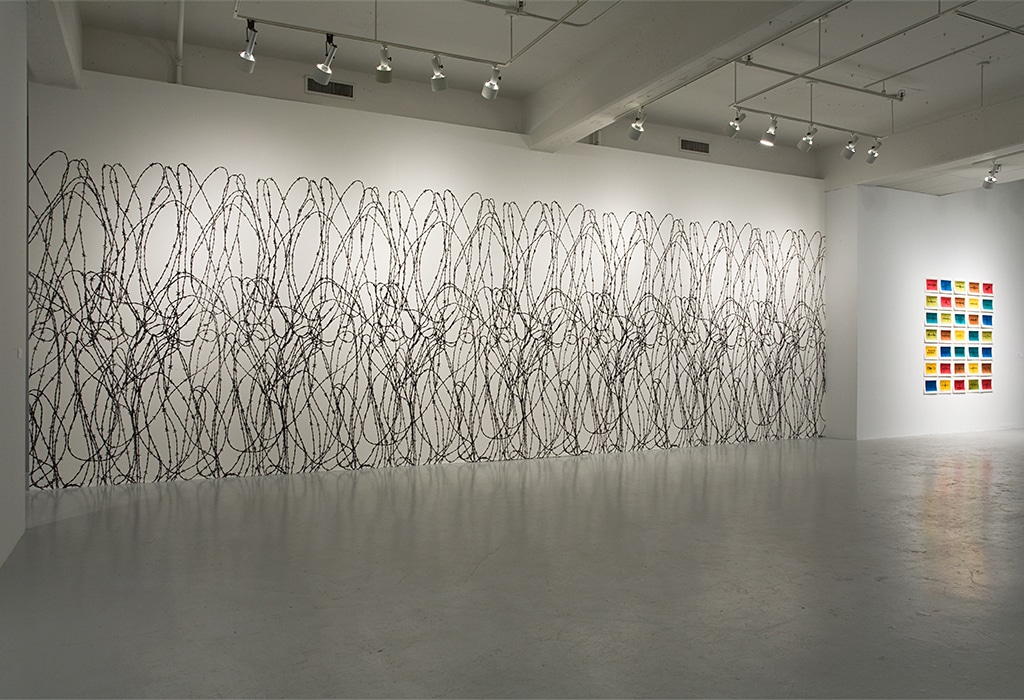Barbed Wire (Berlin, 1961)
Barbed Wire (Berlin, 1961) is based on a well-known photograph taken when the Berlin Wall was first built. The initial barbed wire sections were erected during the night of August 13, 1961. Over the twenty-eight years that the wall separated East and West Berlin it was increasingly expanded to contain reinforced concrete walls, anti-vehicle trenches, and a wide area referred to as the “death strip.”
The barbed wire image was screen-printed and flocked on commercial wallpaper. At a distance the work resembles a tense lyrical drawing; closer up the barbs become apparent. Each time the work is shown the prints are remade so that they can be adhered directly to the walls of the gallery. The stretching of the paper over the surfaces of the architecture is a critical aspect of the experience of the work. Barbed Wire (Berlin, 1961) is one of a series of works that were created concerning the construction of barriers to contain and prevent the movement of individuals.
This work was initially made for the exhibition Beaux rêves, dures verities, Sweet Dreams, Hard Truths that took place at the Musée d’art de Joliette in Joliette, Quebec from January 31 to May 25, 2010. The curator of the exhibition was Eve-Lyne Beaudry.
Made with the assistance of Anil Ragubance
Media: Flock on paper
Dimensions: 3.4 m x 10.2 m (11’ 3” x 33’ 6”)
Photography: Richard-Max Tremblay
